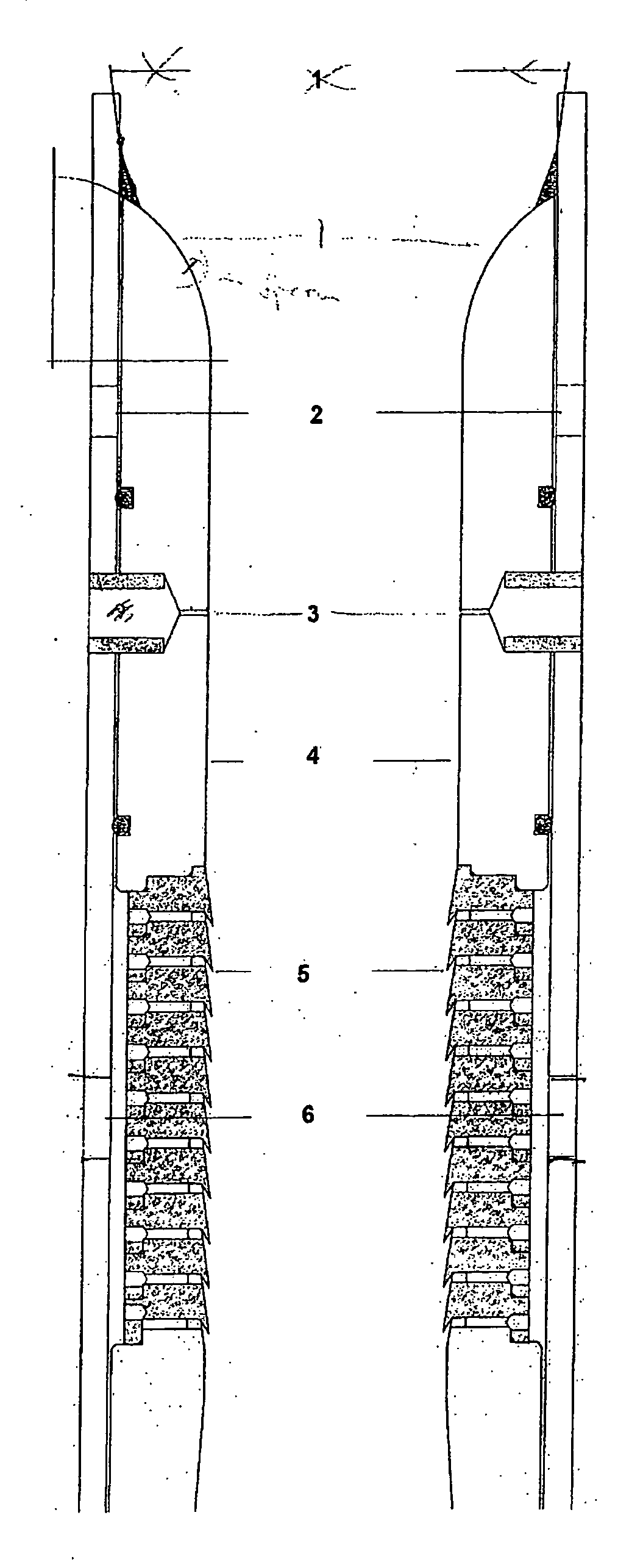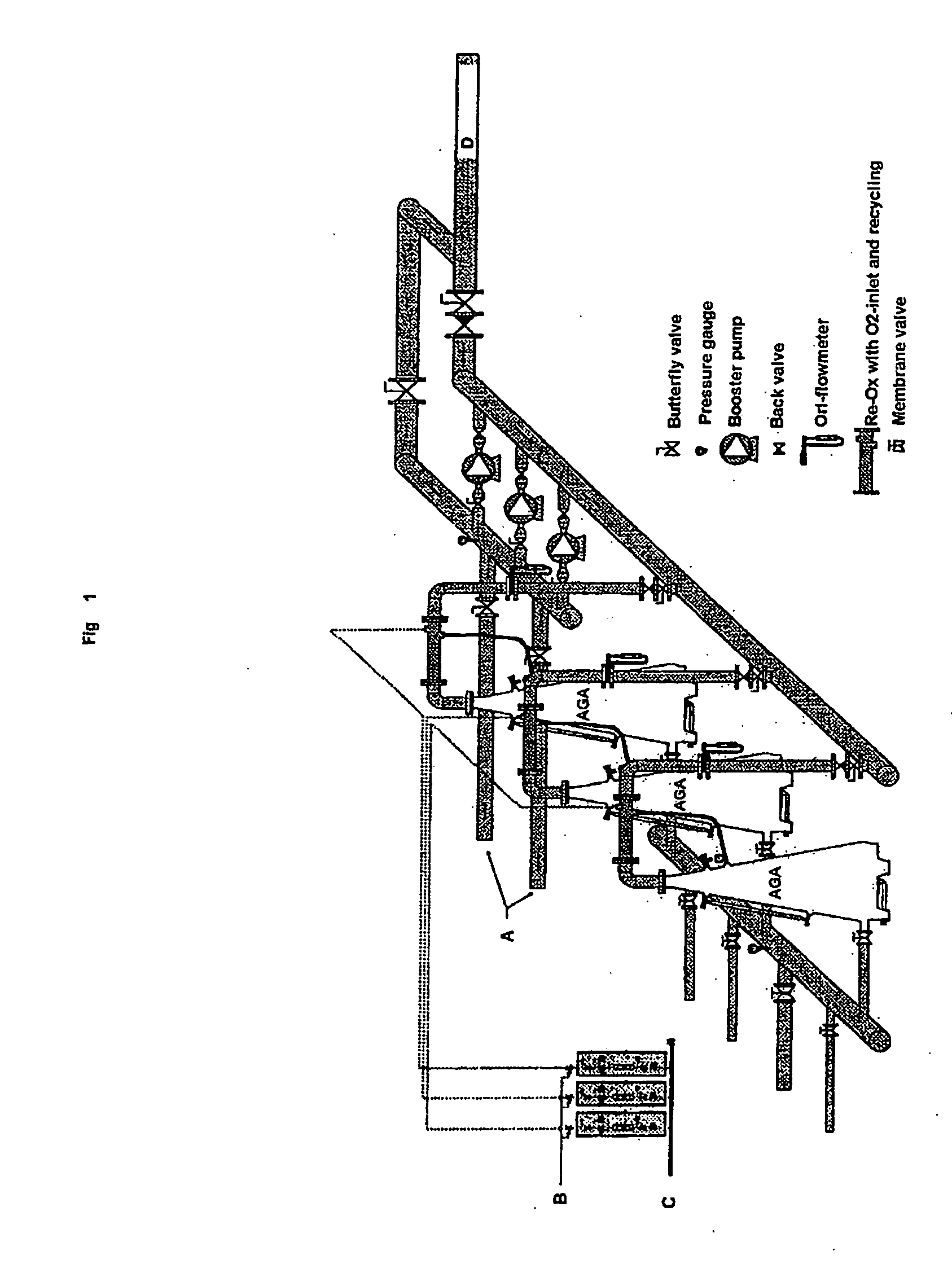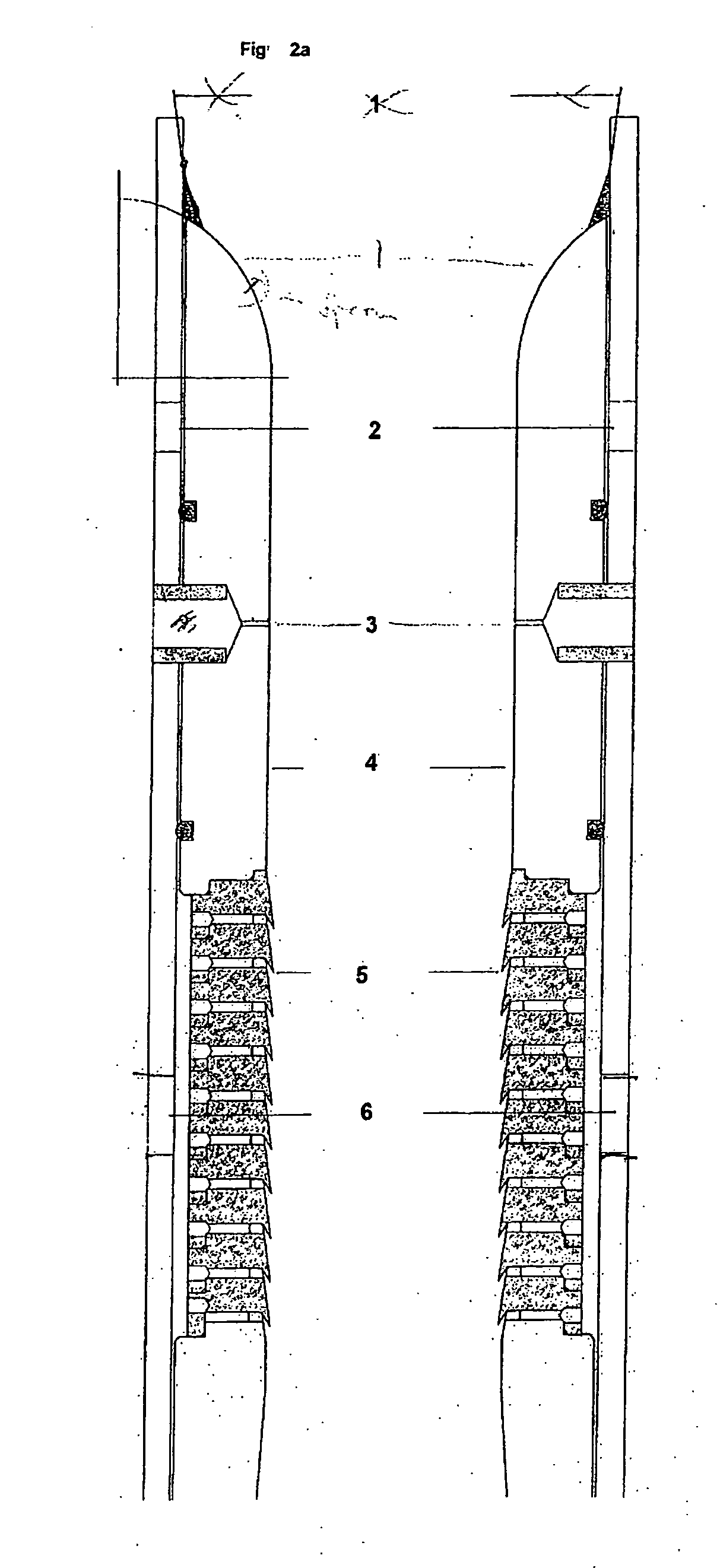Oxygenating nozzle
a technology of oxygenating nozzles and nozzles, which is applied in the direction of sustainable biological treatment, biological water/sewage treatment, separation processes, etc., can solve the problems of limiting the installation amount of water, the nozzles used today are not able to give a sufficient level of dissolved oxygen, and the capacity is relatively small
- Summary
- Abstract
- Description
- Claims
- Application Information
AI Technical Summary
Benefits of technology
Problems solved by technology
Method used
Image
Examples
example
[0027] The technique behind the nozzle arrangement is to utilize pressure differences to recycle gas from the gas volume on top of the cone back into the inlet water which is reentering the cone. On the basis of a cone having a capacity of 60 m3 / h water, 3.8 bar pressure and temperature of 10° C. there can be dosed an amount of 6.25 kg / h oxygen. Tests have been done at the AGA test centre on the cone with a flow rate and pressure as described. The tests show that the use of the nozzle arrangement according to the invention increases the capacity of the cone with up to 9.7 kg, i.e. a 50% increase, which gives a capacity of about 78% of theoretical capacity. A hatchery which has to increase their oxygenating capacity from 2 to 3 cones can choose to install the present invention on their cones and thereby obtain the same total capacity. In addition, the energy consumption per kilo dissolved oxygen is substantially reduced.
PUM
| Property | Measurement | Unit |
|---|---|---|
| angle | aaaaa | aaaaa |
| angle | aaaaa | aaaaa |
| angle | aaaaa | aaaaa |
Abstract
Description
Claims
Application Information
 Login to View More
Login to View More - R&D
- Intellectual Property
- Life Sciences
- Materials
- Tech Scout
- Unparalleled Data Quality
- Higher Quality Content
- 60% Fewer Hallucinations
Browse by: Latest US Patents, China's latest patents, Technical Efficacy Thesaurus, Application Domain, Technology Topic, Popular Technical Reports.
© 2025 PatSnap. All rights reserved.Legal|Privacy policy|Modern Slavery Act Transparency Statement|Sitemap|About US| Contact US: help@patsnap.com



